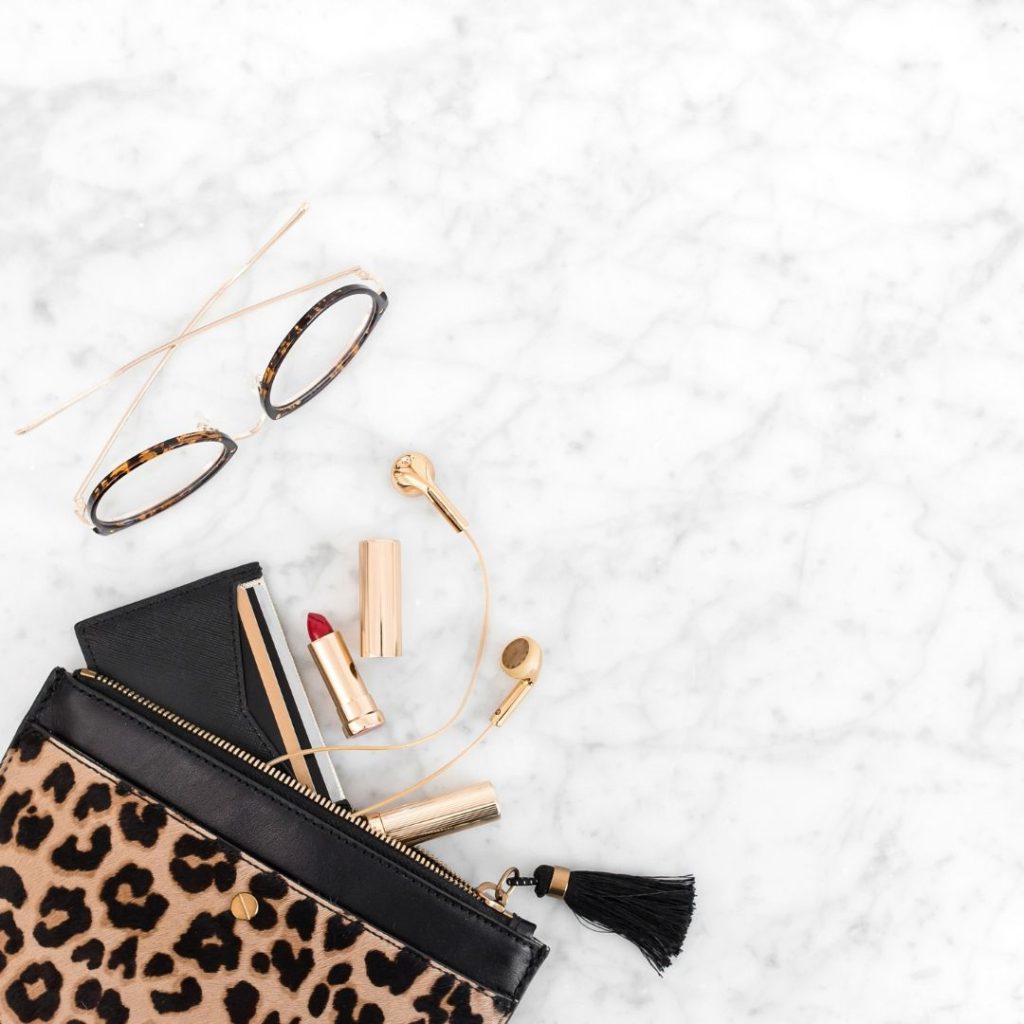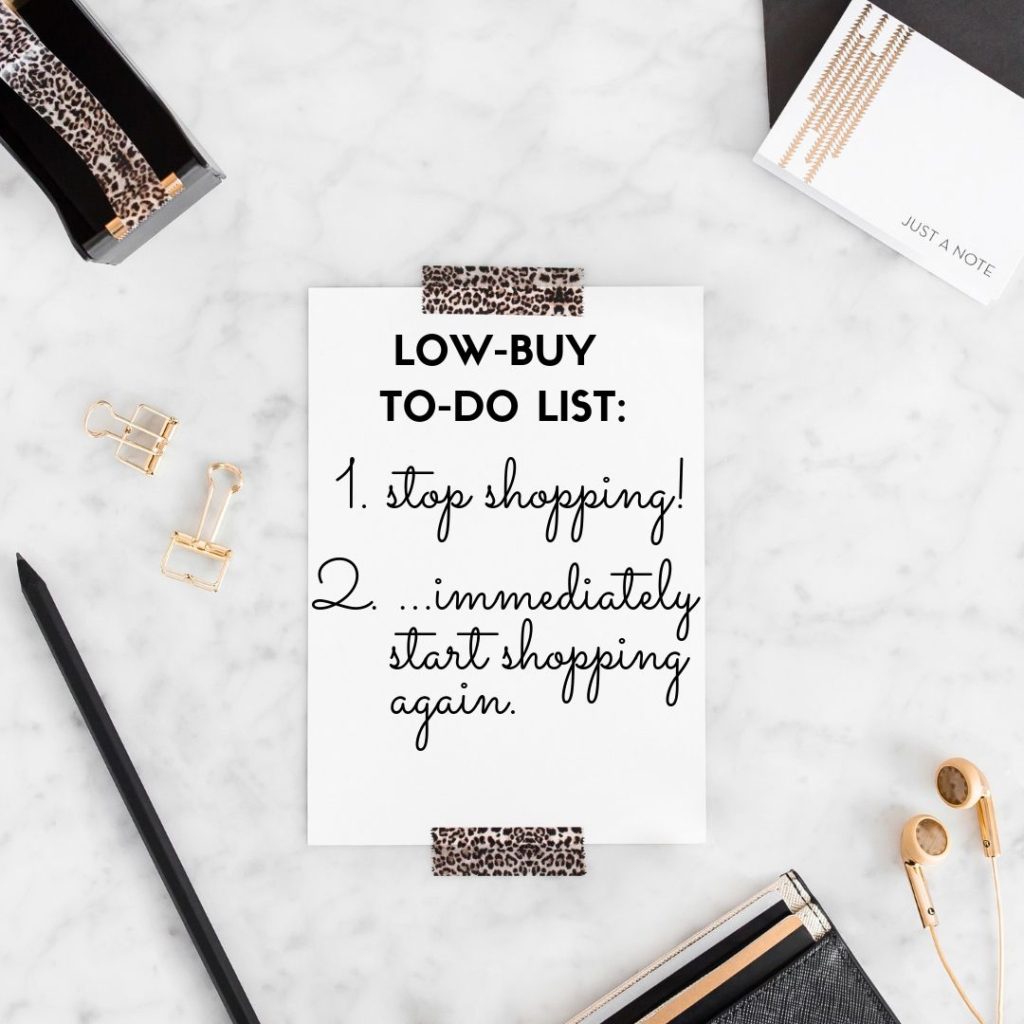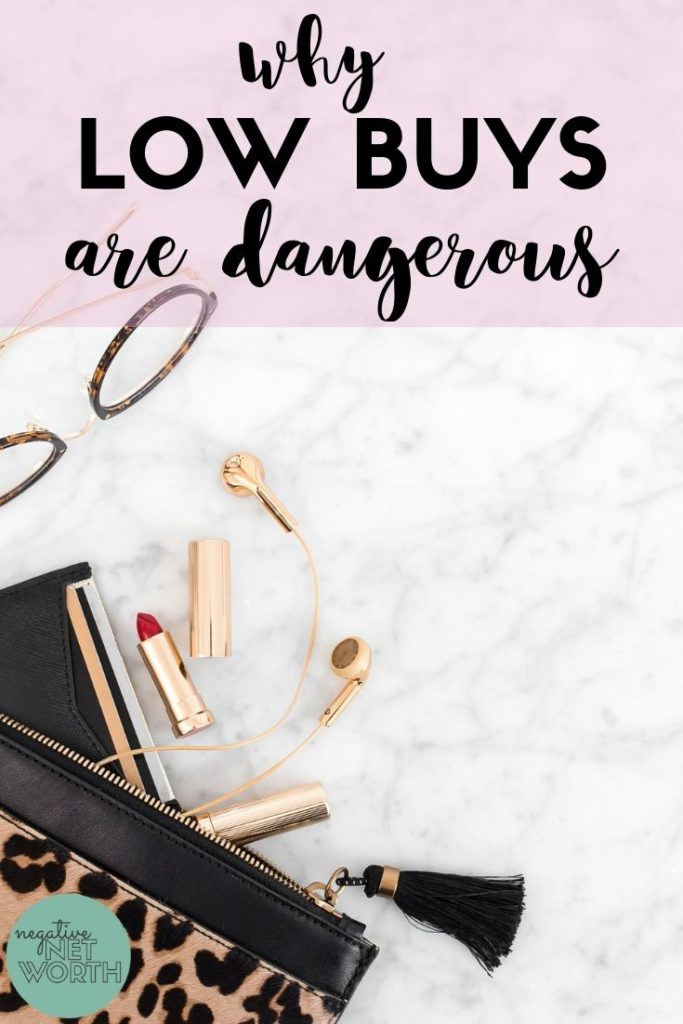
A common suggestion among the shopping-addicted, the spendthrifts, and the financially forlorn is to place yourself on a “low buy” to facilitate better habits. But these can be dangerous.
What is a low buy?
A low buy is usually a set period of time—i.e., 3-6 months—during which you limit yourself to a set number of purchases, lower than the amount you usually buy.
For some people, this can be an incredibly effective tool. It’s easy to see why: When you are in the thick of a spending problem, any decrease in your spending comes as a welcome change.
But the problem with low buys is they lull you into a false sense of complacency with an easy-to-achieve goal, which then skews your impulses to shop again when the “low buy” period ends.
Let me be clear: for those who do not have compulsive shopping problems, low buys are basically a way of life. Which is why some might say, “Why could a low buy be bad?” Frugal people employ “low buys” every day!
“Low Buys” aren’t dangerous for regular people. They are dangerous for shopping addicts.
When you have problems with overspending, your reward/gratification and impulse systems are completely out of whack.
So when a “low buy” period ends for a spendthrift, do you know what happens? They immediately revert back to overspending.

That’s because a low buy doesn’t get to the root of the problem. It’s simply a rock thrown into a volcano of spending problems, and people can delude themselves into thinking that tiny rock will prevent the eruption to come.
There’s a better way.
The only way to truly make a change with your spending is to try to be consistent, all the time. Small, temporary chunks of buying less will NOT make a difference overall, especially when the impulse to shop is still there.
You have to treat your shopping impulses like a muscle. If you only work out for 3 months out of the year, will it make a difference? Marginally, perhaps. But you’ll never see the results you dream of.
The only “low buy” that works is the perpetual low buy: “no buy, replacement only.” As in, only buy what you need, or have to replace—with the occasional, well-thought-out want—forever. That’s why you can call this a “no-buy, replacement-only” strategy. Otherwise, you are giving yourself license to return to your bad shopping habits as soon as your “low buy” ends!
Ultimately, low buys are great if you already have your shopping and impulse-control in check, and are able to create—and stick to—a spending strategy that involves more regular shopping.
But if you don’t have your shopping and impulse-control in check, low buys are simply a temporary salve for a much larger problem. And you may want to check out my post on the no-buy, replacement-only strategy for more help on this!
Once you’re totally out of debt and on the path to financial freedom, then reassess. Maybe you’ll want to start using a low-buy strategy! But my guess is, by then, you won’t want to squander away all your hard work. 🙂

want to remember this post? pin it for later!


Leave a Reply